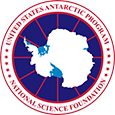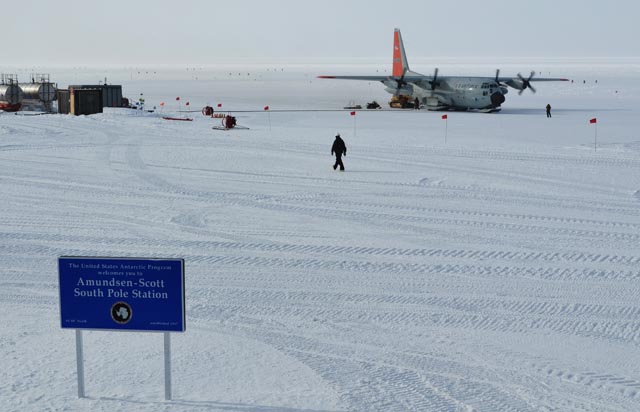|
Air supportNYANG marks 25 years of flying 'skibird' across AntarcticaPosted April 5, 2013
The New York Air National Guard’s 109th Airlift Wing The unit made its first trip to Antarctica in January 1988 when the U.S. Navy During 2012-2013, the unit completed 310 total missions, flying 2,219 hours and transporting 6.4 million pounds of cargo and fuel. The 109th also airlifted 3,602 passengers to and around the frozen continent. Photo Credit: Peter Rejcek/Antarctic Photo Library
A view of the Transantarctic Mountains from the cockpit of an LC-130 airplane en route to South Pole.
Antarctic operations for the 109th have seen many changes over the years. In 1988, the unit sent down only two aircraft to augment the Navy ski-equipped LC-130s. By 1999, the Air Guard and U.S. Air Force This past season, the 109th deployed six of the “skibirds” to Antarctica in late October. LC-130 hub operations were based at McMurdo Station The 109th plays an integral role in supporting the South Pole Station Over the past quarter-century, the 109th has helped establish more 100 remote field sites. This year alone, 14 sites were active, including the South Pole Station. Sustainment of operations in these far remote locations requires the capability of the heavy airlift aircraft to provide enough fuel, equipment and supplies to keep researchers safe and able to conduct their science missions. All camps and the South Pole require ski take-offs and landings, and many have ungroomed surfaces. The 109th Airlift Wing is the only unit in the world that has aircraft with this capability. “When we go out to the deep field there are always challenges. A great deal of hard work goes into planning and executing every deep-field mission, but it pays off knowing we are supporting the NSF with new discoveries all over the continent," said Maj. Joseph J. DeConno, LC-130 navigator and chief of current operations, in a NYANG press release. “It’s some of the most challenging flying I've ever experienced, and every flight is unique.” |



For USAP Participants |
For The Public |
For Researchers and EducatorsContact UsU.S. National Science FoundationOffice of Polar Programs Geosciences Directorate 2415 Eisenhower Avenue, Suite W7100 Alexandria, VA 22314 Sign up for the NSF Office of Polar Programs newsletter and events. Feedback Form |


